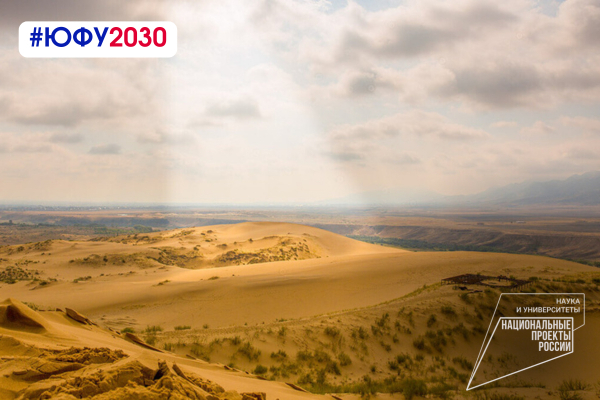
Scientists at the Southern Federal University have recorded significant changes in the nature of southern Russia over the past 60 years. According to their data, due to warming, the bioclimatic zone of deserts and semi-deserts increases annually by 550 km2, covering more and more territories in the Astrakhan and Volgograd regions, as well as in the republics of Kalmykia and Dagestan.
The climatic conditions of the South of Russia are extremely heterogeneous, however, due to warming in most of the territory, aridity has increased over the past 60 years. Scientists from the Southern Federal University studied data from weather stations and, using geoinformation technologies and statistical analysis methods, determined the speed and scale of climate change in Southern Russia from 1961 to 2020.
According to Vasily Gudko, senior researcher at the Research Laboratory "Intelligent Agroecosystems" of the Southern Federal University, the results of this study have significantly expanded the understanding of the dynamics of climatic processes in the region.
"We found that from 1961 to 2020, there was a significant increase in the temperature regime in the region. According to our calculations, the average annual air temperature at all weather stations increased at an average rate of 0.31 ℃ per decade. This is a significant increase. As for the amount of annual precipitation, there have been no significant changes over the same period," he said.

It was also found out that due to warming, the territory of the bioclimatic zone of the desert and semi-desert from 2010 to 2020 significantly expanded from east to west and covered almost the entire territory of the Astrakhan region, most of the Republic of Kalmykia, as well as certain areas of the Volgograd region and the Republic of Dagestan.
"The rate of expansion averaged about 5.5 thousand km2 per decade, or 550 km2 per year, with a total area of the study region of 591 thousand km2. In addition, we calculated how the area of the semi—desert and desert zone changes depending on the change in the average annual air temperature," Vasily Gudko noted.
According to scientists, the results of the study will help reduce the risks of socio-economic and environmental problems associated with desertification and develop approaches to the rational use of water and land resources.
"Desertification is a big and complex problem, and we hope that our research will be a step towards solving it," the scientist stressed.
Such a comprehensive analysis, which included the study of trends in climatic variables, shifts in bioclimatic humidification zones, and the dependence of the areas of various bioclimatic zones on fluctuations in climatic indicators, was conducted for the first time in the South of Russia, the researchers reported. In the future, they plan to study possible shifts in humidification zones depending on different climatic scenarios.
The study was conducted under the Priority 2030 program (national project "Science and Universities") within the framework of the strategic project of the Southern Federal University "Soil Resource Management Systems". The results are published in the scientific journal International Journal of Biometeorology.
Short link to this page sfedu.ru/news/76507




